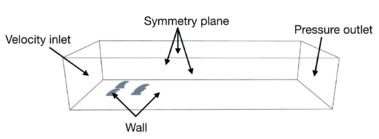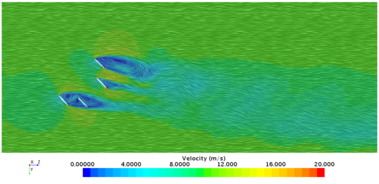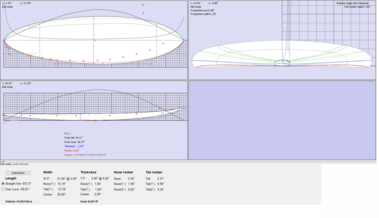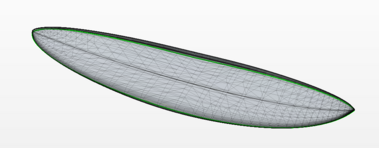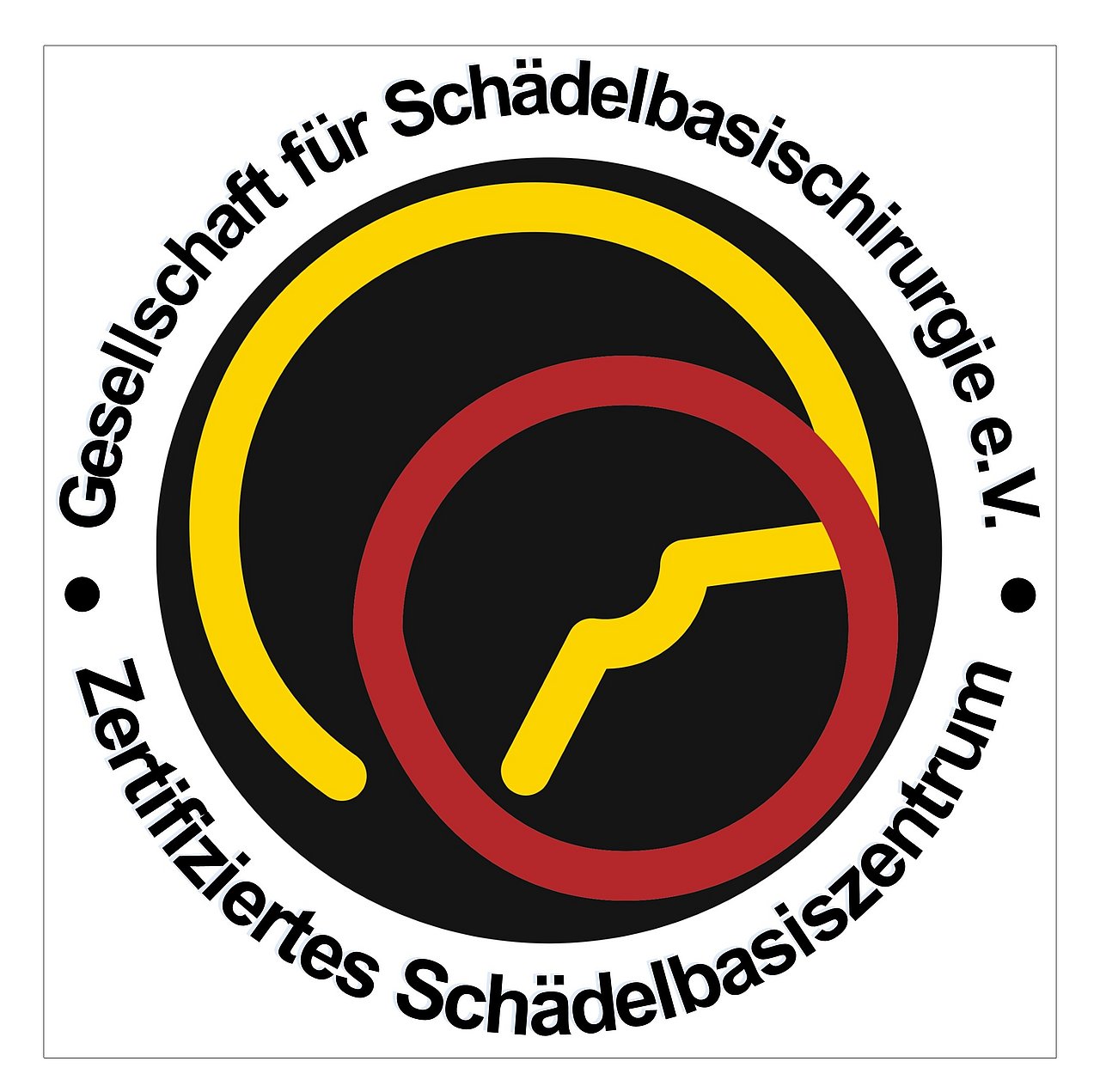surfSim, a surfer-surfboard interaction simulation model
3D visualization of surfSim, our surfer-surfboard interaction simulation model, including the surfboard, the wave as free surface, and the surfer simplified as acting force (visualized as a red arrow). Depending on the surfer's position, the resulting force and torque of the fluid/wave on the surfboard are colored in light and dark blue.
Numerical study on four fin configurations for surfboards
Until now, the surfboard shapers’ experience highly dominates surfboard development in design and construction. Just recently, the shapers started to use milling machines for the board’s fabrication. Nowadays plastics and epoxy compositions are the predominant materials for the fins. Using CFD can not only speed up the development of surfboard and fin design but can also improve the knowledge of the behavior of the complete surfboard system. The basic idea of our studies is to improve CFD models in order to acquire a knowledge base for the fluid dynamical characteristic of the surfboard system.
The behavior of the lift and drag coefficients shows significant variations between the 24 different fin positions. Placing the fins closer to the outline curve of the surfboard generates higher maximum lift and drag forces. An increased angle of attack results in a decrease of the lift and drag forces, since the rear outside fin comes to lie further in the slipstream of the front outside fin. To get appraisal factors for the surfboards stability and maneuverability the yaw and roll moments were established. Both moments arise simultaneously and are strongly dependent on lift and drag coefficients.
Numerical investigation of a surfer-surfboard-system on a free surface
CFD is used in nearly all kinds of sports to achieve better equipment and performances, but in surfboard design and construction, still, the surfboard shapers’ experience is highly dominating. The high spatial and temporal resolutions in combination with unconfined access to the simulation region are great advantages of CFD compared to the still existing try and error method with a physical test setup.
The basic idea of our studies is to develop a CFD model that can fully reproduce a surfer-surfboard-system interaction in static and dynamic common surf motions. If an adequate model is established, the next step is to acquire a knowledge base for the fluid dynamical characteristics of the surfer-surfboard-system and to define a system of objective parameters to categorize the abilities of a surfboard-fin-system.
To reach the previously described aim of objective parameters for categorizing the surfboard-fin-systems characteristics, we will investigate the following forces and moments:
- Lift and drag of the fins
- Buoyancy and drag of the surfboard
- Yaw-, roll and pitch moments produced by the surfer-surfboard-system
We suppose that appraisal factors for the stability and maneuverability of the surfboard are the moments that are acting on the surfer-surfboard-system. The moments that arise simultaneously are strongly dependent on the lift and drag forces of the fins and the buoyancy and drag of the surfboard.
Project period
Surfboard-Fin-System since 08/2017
Stationary wave since 11/2018
Contact Persons
Project staff
Cooperations
- Dr. Roberto Grosso, Lehrstuhl für Informatik 9 (Graphische Datenverarbeitung), FAU Erlangen-Nürnberg, Germany
- Prof. Dr. med. Rolf Janka, Radiologie, Universitätsklinikum Erlangen, Germany
- PD Dr. Nicolas Neuß, Lehrstuhl für Angewandte Mathematik (Wissenschaftliches Rechnen), FAU Erlangen-Nürnberg
- Jerry O’Keefe, Soul Stix Surfboards, San Clemente, CA, USA
- Tom O’Keefe, Daum Tooling Inc., San Clemente, CA, USA
- Prof. Dr. Michael Stingl, Lehrstuhl für Angewandte Mathematik (Kontinuierliche Optimierung), FAU Erlangen-Nürnberg, Germany
Web Links
Publications
Felix Böschen under the supervision of Dr.-Ing. Stefan Kniesburges, Prof. Dr.-Ing. Michael Döllinger and Prof. Dr.-Ing. Stefan Becker: Numerische Analyse der Hydrodynamik eines Drei-Finnen-Surfboard-Setups (Master Thesis, 2017).
Sebastian Falk under the supervision of Dr.-Ing. Stefan Kniesburges, Prof. Dr.-Ing. Michael Döllinger and Prof. Dr.-Ing. Stefan Becker: CFD simulation of four fin configurations and their impact on fluid dynamical characteristics (Master Thesis, 2018).
Birgit Schweinesbein under the supervision of Prof. Dr.-Ing. Michael Döllinger in cooperation with FH-Nürnberg: Software for surfboard surface registration and reconstruction from CT imaging (Master Thesis, 2018).
S. Falk, S. Kniesburges, R. Janka, R. Grosso, S. Becker, M. Semmler, M. Döllinger. Computational hydrodynamics of a typical 3-fin surfboard setup. J Fluid Struct, vol. 90, pp. 297-314, doi.org/10.1016/j.jfluidstructs.2019.07.006, 2019.
S. Falk, S. Kniesburges, R. Janka, T. O’Keefe, R. Grosso, M. Döllinger. Numerical investigation of the hydrodynamics of changing fin positions within a 4-fin surfboard configuration. Appl Sci, vol. 10(3), pp. 816, doi.org/10.3390/app10030816, open access, 2020.
S. Kniesburges, N. Punger, B. Tur, M. Zöllner, M. in het Panhuis, M. Döllinger. Measurements of the hydrodynamic pressure on a surfboard fin during surfing. Sci Rep, vol. 15, pp. 10331, doi.org/10.1038/s41598-025-94834-0, open access, 2025.

